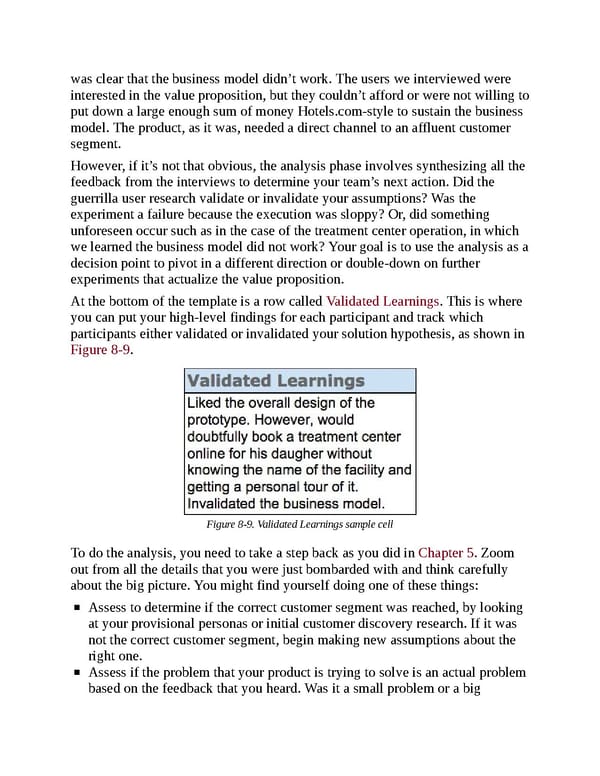was clear that the business model didn’t work. The users we interviewed were interested in the value proposition, but they couldn’t afford or were not willing to put down a large enough sum of money Hotels.com-style to sustain the business model. The product, as it was, needed a direct channel to an affluent customer segment. However, if it’s not that obvious, the analysis phase involves synthesizing all the feedback from the interviews to determine your team’s next action. Did the guerrilla user research validate or invalidate your assumptions? Was the experiment a failure because the execution was sloppy? Or, did something unforeseen occur such as in the case of the treatment center operation, in which we learned the business model did not work? Your goal is to use the analysis as a decision point to pivot in a different direction or double-down on further experiments that actualize the value proposition. At the bottom of the template is a row called Validated Learnings. This is where you can put your high-level findings for each participant and track which participants either validated or invalidated your solution hypothesis, as shown in Figure 8-9. Figure 8-9. Validated Learnings sample cell To do the analysis, you need to take a step back as you did in Chapter 5. Zoom out from all the details that you were just bombarded with and think carefully about the big picture. You might find yourself doing one of these things: Assess to determine if the correct customer segment was reached, by looking at your provisional personas or initial customer discovery research. If it was not the correct customer segment, begin making new assumptions about the right one. Assess if the problem that your product is trying to solve is an actual problem based on the feedback that you heard. Was it a small problem or a big
 UX Strategy: How to Devise Innovative Digital Products that People Want Page 238 Page 240
UX Strategy: How to Devise Innovative Digital Products that People Want Page 238 Page 240